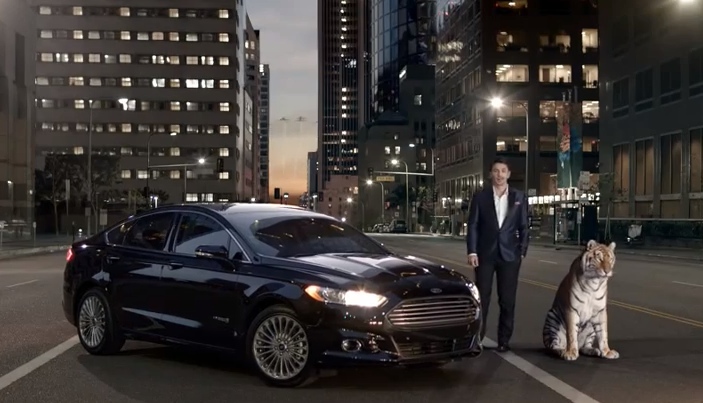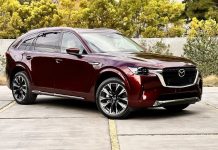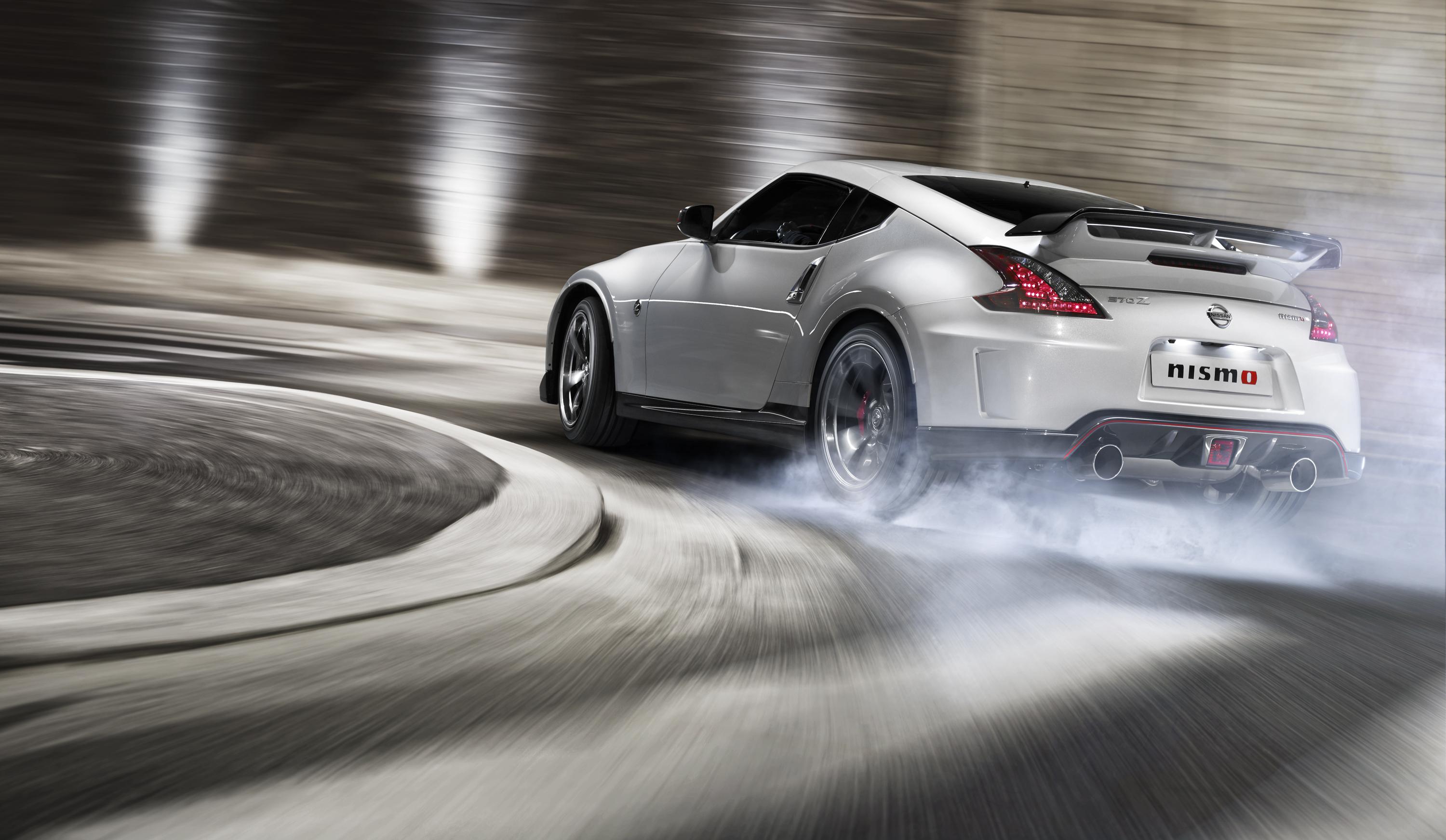The first mass-production car – Ford’s Model T – had many virtues, but variety wasn’t one of them. Not even when it came to color (Henry Ford decreed buyers could have any color they liked, so long as it was black).
Henry Sr. got away with that for awhile, because there weren’t many alternatives to the T. Then Chevy began offering colors – and other things – and the T began to lose some of its luster.
The situation with hybrids is analogous.
The first successful one – the Prius – did its thing (run on battery power much of the time, burn less gas) very well. But it was – like the T – a dowdy thing. Its main appeal was functional – and economical: Its ability to operate on its batteries – and thereby burn less gas.
Fast forward about 15 years – to now.
Lots of choices in a hybrid – many of them capable of nearly matching the performance-at-the-pump of the Prius, while smoking its performance on the road. Not to mention looking good while doing it – something the Prius still can’t do.
The ’14 Ford Fusion hybrid, for instance. It – and its rivals, the Honda Accord hybrid and the Kia Optima hybrid especially – are sporty/sexy-looking hybrid sedans and most un-Prius in every way except for their almost-Prius capability to run on not much gas.
The Ford is a sort of middle ground choice – not quite as economical to operate as the new (and 50 MPG-capable) Accord hybrid (reviewed here) but also not nearly as expensive to buy as the nearly $30k to start Accord hybrid. It’s also much suaver-looking (thanks to its Aston Martin-esque styling) than the Toyota Camry hybrid – while being much more fuel-efficient than the sexy-but-thirsty-for-a-hybrid (36 city, 40 highway) Kia Optima hybrid.
WHAT IT IS
A hybrid gas-electric version of the mid-sized Fusion sedan.
Unlike its target rivals – the Accord, Optima and Camry hybrids – the Ford’s EPA rated fuel economy is the same in both city and highway driving: 47 MPG either way. Other hybrids do their best work in city/suburban stop-and-go-driving – where they can operate with the gas engine off for longer periods. But they typically get not-as-great mileage on the highway.
The Camry hybrid, for instance, rates 43 city – but only 39 highway. The new Accord hybrid’s 50 MPG is tops – only the Prius does better. But that’s city driving. On the highway, the Accord’s rated mileage is lower: 45 MPG.
Base price for the hybrid Fusion is $26,270 – $32,600 for a Titanium.
The hybrid Camry starts at $26,140; the hybrid Accord at $29,155. Kia will launch an updated version of the Optima hybrid later this year. The 2013 model had a base price of $25,900.
There is also a plug-in version of the Fusion hybrid – the Fusion Energi hybrid. Its battery can be recharged via an external power source (either standard 115V household or using a fast charger and 240 volts). This version of the Fusion hybrid has an MSRP of $35,525 and is reviewed separately (see here).
WHAT’S NEW
To make a stronger economic case for the 2014 Fusion hybrid, Ford now offers a lower-priced S trim. Previously, the hybrid Fusion was offered only in more expensive SE and Titanium trims.
Buyers interested in luxury as much as economy, meanwhile, can order a heated steering wheel as well as ventilated front seats.
WHAT’S GOOD
Better city mileage than its rivals.
Excellent overall mileage.
A handsome hybrid.
A not-too-expensive hybrid.
WHAT’S NOT SO GOOD
Not quite as quick as the Accord hybrid – nor as fuel efficient.
Small – and not-so-informative – hybrid displays.
Purse-sized trunk.
Like other hybrids, the Fusion’s got two ways to get going – a 2.0 liter gas engine and an electric motor, which provides supplementary power on demand. There is also a lithium-ion battery pack in the trunk to power the electric motor – and also to power electric accessories when the car is stationary or the gas engine is not running.
Total out put is 188 hp, a bit less than the Camry hybrid (200 hp) and Accord hybrid (196 hp).
Like its rivals, the Honda Accord hybrid and Toyota Camry hybrid, the Fusion hybrid can trundle down the road – and reach (and hold) highway speeds on electric drive alone. The gas engine will automatically kick back on when the battery pack depletes, in order to recharge it as well as to keep you moving.
The standard – and only – transmission is a continuously variable (CVT) automatic – a type of automatic that is becoming the go-to transmission in cars generally and not just hybrids because it offers the efficiency of a manual with the ease of use of a conventional (hydraulic) automatic.
Instead of a torque converter, valve body and fixed forward gears, a CVT uses a pair of variable-diameter pulleys connected by a chain. As the pulleys expand or contract, the groove the chain rides in increases or decreases – and this alters the effective drive ratio, just like shifting from first to second or from second to third (and so on). The big advantage is the CVT’s “gears” (ranges, really) are almost infinitely (and, of course, continuously) variable – whereas a conventional automatic or manual transmission has only so many forward gears, each one a step up – or a step down.
The CVT is always in the right gear for optimum efficiency, whereas a conventional automatic or manual only hit that sweet spot sometimes.
Another CVT upside: There’s no “shift shock” – as from first to second (with a conventional automatic or manual) during full throttle acceleration – because there is no shift. The CVT simply eases into a different ratio, without any discernible sensation. Acceleration – even pedal to the metal – is turbine-like. Uninterrupted forward thrust, until you back off the pedal.
The downside of CVTs is they’re a little noisy – though this is getting better. 
The Ford’s gas mileage – and performance – is an interesting counterpoint to its rivals. It doesn’t quite match the current class- best Honda Accord – the first other-than-Prius hybrid to achieve a 50 MPG (city) rating, nor its class-best acceleration (0-60 in about 7.5 seconds vs. 8.4 for the Ford). But its combined 47 MPG (city and highway) is more balanced than the Accord’s (and other hybrids in this class) typically better city – and typically worse– highway mileage.
However, there is some question among car jockey test drivers as to the Fusion’s real world vs. claimed mileage.
I’ll get into that now.
Cue that old lady at the counter barking, “Where’s the beef?”
It just happened that I test drove the Fusion hybrid the week after test-driving the Accord hybrid, so I was able to directly compare their relative performance – and real-world mileage.
In theory, both cars ought to deliver – roughly – the same overall mileage. Even though the Accord is tilted (like other hybrids) more toward the “city” side of the scale, its average – combined city and highway, divided by two – works out to the same 47 MPG as the Fusion’s rated 47 city/47 highway. 47.5 MPG, actually.
Yet – for me – the Accord hybrid’s real-world mileage was noticeably higher than Ford’s.
After a week of driving the Honda, it still had nearly a third of a tank left when the delivery service came to pick it up. As I type this – with two days left before they come to pick up the Ford – the Fusion’s tank is nearly empty, according to the gauge.
Roughly the same miles driven – by the same driver. But the Fusion didn’t go as far as the Accord hybrid.
Was is los?
Well, one factor is fuel. There’s less of it in the Fusion’s gas tank. Which holds 13.5 gallons vs. the Honda’s 15.8 gallons. Still, that doesn’t quite explain everything. The difference – 2.3 gallons – would theoretically add 108.1 miles of driving range (at 47 MPG), upping the maximum city/highway range to 742.6 miles. But the Honda – with the same fuel load – can go 790 miles.
At least, according to the EPA.
According to me, the Accord has longer legs than the Fusion – 41.4 MPG average (per the Honda’s in-car mileage computer) vs. 40.3 for the Ford. To be fair to both cars, this is much lower than either are capable of. My driving is fast – and I live out in the Woods, far from the traffic jams and stop-and-go driving where hybrids do their best work. Be gentler to either car and you ought to see closer to 45-50 MPG. 
However, the Accord’s higher performance was nice to have out in the Woods – out on the road – where its 1 second advantage in pick-up can be felt (and used). The Fusion’s not slow, mind. Just not as quick as the Accord. Which I would not harp on, if it were also more fuel efficient.
But, it’s not.
It is, however, less expensive – and that has to be taken into consideration (see below for more on this point).
Handling-wise, the Fusion is – once again – middle-of-the-road. It can be driven faster – and still feel like it’s not being driven too fast – than the Mr. Softie Camry hybrid, but won’t corner at speed as confidently as the Accord hybrid. It’s kind of fun to squeal the tires around the apexes, though. 
From a hybrid buyer’s perspective, the main beef with the Fusion hybrid may be its hybrid-specific gauges – specifically, the one to the left of the speedo that “coaches” you as you drive to obtain the best mileage, as well as the larger LCD display in the center stack. The gauge to the left is much too small – too small to show more than one readout at a time (such as battery charge) and too small to read at a glance. To get more info, you’ve got to scroll – using little buttons on the steering wheel – throughout he various menus. The other – larger – screen in the center stack is more devoted to the audio system, navigation and apps than to monitoring the hybrid drivetrain’s operations.
In the Accord, you get a lush – and real-time – display of numerous operating parameters.
The Fusion’s CVT is commendably not-noisy, even under WOT acceleration. And when you’re just loping along, the drivetrain is dead quiet. Literally. Because you can operate gas engine off at pretty high road speeds. Watch the “EV” light to the left of the speedo; when it’s on the gas engine isn’t – and the Fusion is a silent runner. Roll the windows down and all you’ll hear is the wind and the tires – until the gas engine fires back up. And that’s something you’ll need to listen closely for. There’s no shudder, no bark of exhaust. The little “EV” light goes off – and that’s your major clue-in.
Pretty cool.
Back in the ’90s, Ford swallowed up a bunch of smaller car companies – high end car companies – and subsumed them under something called the Premier Auto Group. One of these acquisitions (since divested) was Aston Martin.
Notice anything Aston Martin-ish about the Fusion?
There’s a Vantage in the woodpile – so to speak. Especially from the front end. The chin, the eyes . . who’s your daddy?
No faulting this car’s looks. Much less its best-in-class front seat legroom (44.3 inches – the Camry’s only got 41.6 inches; the Accord comes in a distant second with 42.5 inches). Second row legroom is generous, too – 38.3 inches, vs. 38.5 in the Accord and 38.9 in the Camry.
Trunk space, on the other hand, is just 12 cubic feet – which for a mid-sized family sedan is pretty puny. On the other hand, neither the Accord hybrid nor the Camry hybrid are much better – 12.7 and 13.1 cubes, respectively. All the cars in this class – hybrid mid-sized sedans – have small trunks because they are mid-sized sedans. If they were tall-roofed hatchbacks – like the Prius – the space taken by the battery pack would be compensated for by the additional real estate provided by the tall-roof/hatchback layout. But as sedans, they’re inherently constrained; there’s only so much the designers can do within the parameters of the layout. This rather than fuel efficiency is now the chief downside to owning a hybrid sedan like the Fusion or its competitors – relative to the Prius.
I got about 2-3 MPG better mileage – overall – in the Accord hybrid during the course of my weeklong test drive, vs. what I got out of the Fusion. If all else were equal, the Accord hybrid would be the go-to hybrid, for me. Not only because of its somewhat better mileage but also because of its much better performance. However, as appealing as the Accord hybrid is (to me, at least) I think you have to take into account the $2,885 difference in price – in the Fusion’s favor.
After all, buying one of these hybrids is at least nominally about saving money – as much as about saving on gas. And $2,885 is no small chunk of change.
I think Ford was smart to undercut the Accord, price-wise. It definitely makes up for a lot, performance and economy-wise.
Buyer’s note: If you’re in the market for a hybrid mid-sized sedan, you might want to wait a couple months. Kia is going to introduce an updated version of the Optima hybrid very soon – and knowing Kia, it would not be surprising to me if it one-upped both Honda and Ford. Toyota, meanwhile, has an all-new Camry on deck for the 2015 model year – which is only a few months from now.
It, too, could be a game-changer.
THE BOTTOM LINE
The new Fusion hybrid – and its rivals – are rolling proof that hybrids are finally ready for prime time. They do more than merely work.
They work well.
Please consider supporting EPautos.com. We depend on you to keep the wheels turning. Our donate button is here.
For those not Pay Pal-inclined, you can mail us at the following:
EPautos
721 Hummingbird Lane SE
Copper Hill, VA 24079















“Henry Ford decreed buyers could have any color they liked, so long as it was black” According to the tour guide at the Reno/Harrah’s auto museum Ford was likely talking about a specific version meant for commercial buyers. The most popular color for retail buyers was, …… , red.
The Ten Most Ridiculous Car Myths
http://jalopnik.com/5974850/the-ten-most-ridiculous-car-myths
Hi Eric, been reading your site for a while now, and have been enjoying your writing, finally registered to start making comments!
What has always baffled me about hybrids and electrics (not just the Ford Fusion) is why do all the auto makers all go down the same road technology wise? OK, I probably know the answer to that, economics and more importantly, how government is (over) regulating it.
Hybrids (and the Volt) in their current form, are at a basic level, putting in two ways to make the wheels go around. That makes for a more expensive and way more complex car, for no good reason. You have a gas engine, a mechanical transmission, a electric motor(s), and a load of (heavy) batteries. It will be hard to beat more costs out of such a vehicle.
I have always wondered why don’t auto makers do this in the meantime. Maybe those here who know more about engineering and physics could chime in. Why don’t they do this:
A hybrid with no batteries, no mechanical transmission. What you may ask? Yeah, why not. Batteries are heavy and don’t really provide much in the way of range and are the main reason electrics won’t take off. That doesn’t seem like it will change anytime soon. A mechanical transmission is heavy too and complex too.
Electric motors aren’t bad now, so they would be the way the wheels turn. But instead of batteries, you have a (hopefully a lot smaller then what you would need to directly power the car via the transmission) diesel (or gas) engine powering a generator. AKA, like how a locomotive on a train works. Its powerful, efficient (for what its doing) on a railroad. It’s proven technology that has been around for 70+ years. Does it not scale down to the size of cars and trucks?
I know “politically” it won’t work, due to the fact you don’t get rid of the ICE. But what would be the challenges of the engineering of such a vehicle? What do people think?
cheers
Hi Rich,
It’s a Catch-22 situation. Without some way to top off the battery pack while driving, hybrids wouldn’t be able to go very far due to the limitations of battery capability. Hence the IC engine, which serves as an on-board generator in addition to providing propulsion. The electric motor provides immediate and abundant torque, and does not (necessarily) require a transmission to leverage its mechanical force. But, you need electricity to run it – hence the battery pack. Which needs to be kept charged up – hence the IC engine.
Now, there are several things that could be done to make hybrids much more efficient. Chief among these – lighten ’em up!
Honda’s original Insight – made in the late ’90s/early 2000s – was capable of 70 MPG. It was a light two-seater. Most current hybrids are fairly large (mid-sized) sedans/hatchbacks and very heavy. THey are heavy to a great extent because of government “safety” mandates – which of course conflict with the goal of making cars more fuel efficient (and not just hybrid cars, either).
Also, there is conflict between consumers’ desire for performance and their desire for economy.
Even the Prius – the least quick of all hybrids – is a high performance muscle car . . . compared with the typical IC car of my childhood back in the ’70s. Back then, a family car took around 12 seconds to hit 60. Economy cars of the period – the original VW Beetle, for instance – took 15-20 seconds to get to 60.
The Prius gets there in about 11 seconds.
It also easily cruises at 80 – and can reach speeds well over 100 MPH (trust me).
This is wonderful – but it costs (gas/energy) to achieve.
Mind, I’m not slamming the performance of hybrids. I’m just observing that they’d be a lot more fuel-efficient if they were around 2,200 pounds rather than 3,200 pounds – and could get by with 100 hp powertrains rather than 200 hp powertrains.
Such a hybrid might need 12 or so seconds to get to 60. It might have a top speed of 80-ish MPH. But I bet it would also give you 70-plus MPG all day long.
So, it’s a question of priorities.
The truth is, most people don’t value gas mileage uber alles. It is merely one among several other values – including performance, safety – etc.
There’s nothing wrong with this.
But it’s important to not expect miracles – that conflicting wants result in compromises.
And that’s my 50!
That’s how the Volt works. You have the batteries and electric motor powering the wheels and the gas engine is there JUST to charge the batteries.
Granted, I hear the Volt is no more efficient than a normal hybrid, but that’s because Chevy did it wrong. They should’ve made it a diesel. Diesel engines are more suited for that kind of steady-RPM load than gas engines are. A Volt with a diesel could easily get 70-80 MPG with the engine running, as opposed to less than 40 as it is.
Yes “looking good” is something Prii can’t do as well as the other hybrids. One Prius though, can do something better than any of it’s competitors.
While all the others, including the smaller Prius models, are simply sedans with tiny, “truncated” trunks, the Prius V is more like a small minivan. It’s utility simply blows away all the others.
Granted, at 44/40mpg it’s not quite as economical. But that’s still better than almost any of your beloved diesels…..not to mention gassers. And the V is not just a transportation device. It’s also a nifty little cargo carrier.
So if I suddenly had to go hybrid….make mine the Prius V.
Good point, Mike –
I’m a fan of the V also. But Toyota’s gonna need to up its MPGs for it to remain competitive, given that many non-hybrid economy cars (and hatchback wagons) come close to delivering what the V delivers, MPG-wise.
C-Max for me, please. The Ford C-Max has the exact same drivetrain as the Fusion hybrid (2.0L + electric motor for 180ish combined HP), but the C-Max being a lighter Focus-based microvan, it performs *better* than the Fusion AND has gobs of usable space in the back.
And it doesn’t look like a burn victim like the Prius V does.
A former coworker has one of these (last years model) and it’s a very nice car. In fact, it’s probably the nicest mid-sized sedan Ford has ever made. There’s a reason why Ford is having trouble building enough of them — people are lined up at the dealerships, waving checks in the air — “Take my money, please!”